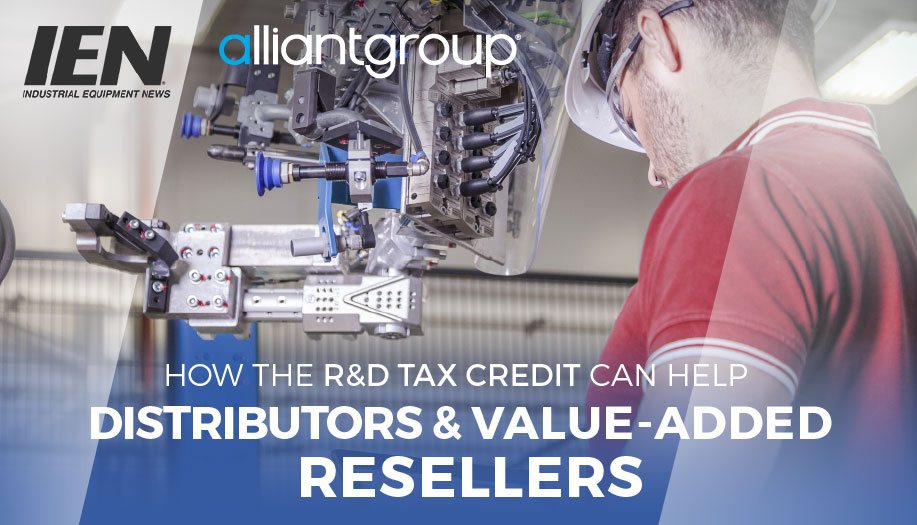August 18, 2017
by Tracy Lustyan, alliantgroup Managing Director
DC Velocity
The material handling and logistics industry has become one of the fastest growing sectors of the economy. System integrators and other material handling businesses support the manufacturing industry by making its processes more efficient and its fragmented supply chains easier to manage. In the future, there will be an increased need for global supply chains and distribution. As a result of businesses incorporating new technologies to more efficiently handle and distribute goods, the material handling market will continue to surge as businesses spend more money on logistics systems each year.
Recent data estimates that the consumption of material handling and logistics equipment and systems exceeds $156 billion in the United States alone and employs over 700,000 workers. According to the Council of Supply Chain Management Professionals (CSCMP), the costs of U.S. business logistics were almost $1.5 trillion—or about 8 percent of our country’s GDP—in 2013. Clearly, the numbers point to a booming industry that will be a key driver for broad economic growth in the future.
The material handling sector’s growth could be further accelerated by a powerful tax incentive opportunity known as the Research and Development Tax Credit. Recent regulatory and legislative changes have expanded the number of businesses that can claim this credit as well as the value of the credit itself.
The Research and Development Tax Credit
The name of this tax credit is something of a misnomer. To qualify for the credit, businesses do not have to experiment with beakers and test tubes. Rather, the R&D Tax Credit rewards businesses for keeping technical jobs in the United States. The R&D credit is wage-based, which means the dollar amount of the credit is primarily based on employee and contractor wages in addition to supply costs.
When Congress recently expanded this incentive, its intention was to encourage companies to keep production and distribution in the United States. The credit rewards businesses that use American components in their products or hire American contractors to handle the fabrication, controls and automation of material handling systems. The credit is now permanent and one of the largest incentives offered at the federal level. Many states have their own versions of this federal credit as well.
Any company or contractor that designs, engineers or builds material handling equipment or processes is a great candidate for the R&D credit. To give a real-world example, a conveyor systems solutions provider received over $1 million in federal and state credits for designing a heavy-weight conveyor belt system for a frac sand mining operation. This company tested various conveyor belt designs and also evaluated different substances to build the conveyor belt itself (such as Kevlar, rubber or polyvinyl chloride).
Businesses in the material handling industry are already conducting activities that qualify for the R&D Tax Credit each day. To name a few qualifying activities:
- Developing, designing, programming, manufacturing, testing or fabricating equipment or material handling systems
- Performing retrofits or other system modernizations
- Developing or programming guiding systems software for automatic guided vehicle systems (AVGS) or automated storage / retrieval systems (AS/RS)
- Designing, developing or programming robotic systems
- Developing logistics, order fulfillment or tracking software
- Manufacturing or integrating motion controls or motor systems
- Developing overhead material handling solutions (i.e. cranes, hoists, monorails)
Recent Changes to the Credit
In 2014, regulatory changes expanded the type of supply costs that are eligible for this credit. Eligible supply costs now include components and material costs consumed in the development of a first article that is delivered to customers. By counting these supply costs, businesses are now finding that their credit amount can be two to ten times the size of their previous credits. If a business that engineers and builds solutions for the material handling industry has examined the credit in the past, this same business could now be eligible for a significantly larger credit.
Beginning in the 2016 tax year, businesses with less than $50 million in gross receipts can now claim this credit against their alternative minimum tax (AMT). Traditionally, the AMT barrier was why many small and mid-sized businesses could not claim the credit. With the AMT turn off, businesses of every size can stand to benefit from this powerful tax incentive.
There have been many other regulatory and legislative changes that have expanded the credit to reward businesses for conducting qualified applied research in the United States. The credit now rewards companies that solve a technical problem on a factory floor or improve an
assembly line or distribution process.
These modifications to the credit should not be overlooked. The credit’s expansion combined with the shift towards automated technology means that businesses in this industry will have ample opportunity to claim the credit.
New Technologies, New Opportunities for Growth
As consumers expect goods to be delivered at a moment’s notice, businesses are not only opening more distribution centers but also investing in new equipment and distribution processes. These new innovative technologies are part of a larger automation trend in the manufacturing industry. A report by Global Industry Analysts, Inc. stated:
Material handling equipment manufacturers are increasingly incorporating advanced technologies, mechanisms and solutions such as robots, and automated guiding vehicles, among others, for enhanced productivity and safety. Technologies that are poised to benefit material handling businesses in the near term include the Internet of Things, cloud computing, data analytics and machine-to-machine (M2M) communications.
The continued adoption of automation systems will create more efficient multichannel distribution and other material handling processes. These shifts to new automated technologies will continue having a significant impact on businesses. For example, a material handling company received $596,000 in federal and state R&D credits for designing improvements to an existing industrial system. This company determined the optimal layout for the automated system by testing different designs and response times. They redesigned existing components to ensure compatibility with the improved system and rewired the communication system.
Material handling businesses will continue to invest in automated solutions to stay competitive in an increasingly technological space. Tax incentive opportunities that can significantly reduce businesses’ tax liabilities such as the R&D Tax Credit will be crucial. At alliantgroup, we highly encourage manufacturers, systems integrators and other material handling businesses to see if they qualify for this credit. The R&D Tax Credit is a great opportunity for this advancing industry.
 Tracy Lustyan is an expert on the Research and Development (R&D) Tax Credit and how it applies to innovative businesses. As a Managing Director at alliantgroup, Tracy has partnered with more than 225 CPA firms to uncover more than $380 million in government-sponsored tax savings for more than 900 companies operating in diverse industries, including manufacturing, systems integration, engineering and software.
Tracy Lustyan is an expert on the Research and Development (R&D) Tax Credit and how it applies to innovative businesses. As a Managing Director at alliantgroup, Tracy has partnered with more than 225 CPA firms to uncover more than $380 million in government-sponsored tax savings for more than 900 companies operating in diverse industries, including manufacturing, systems integration, engineering and software.
Would you like additional information or do you have questions?


